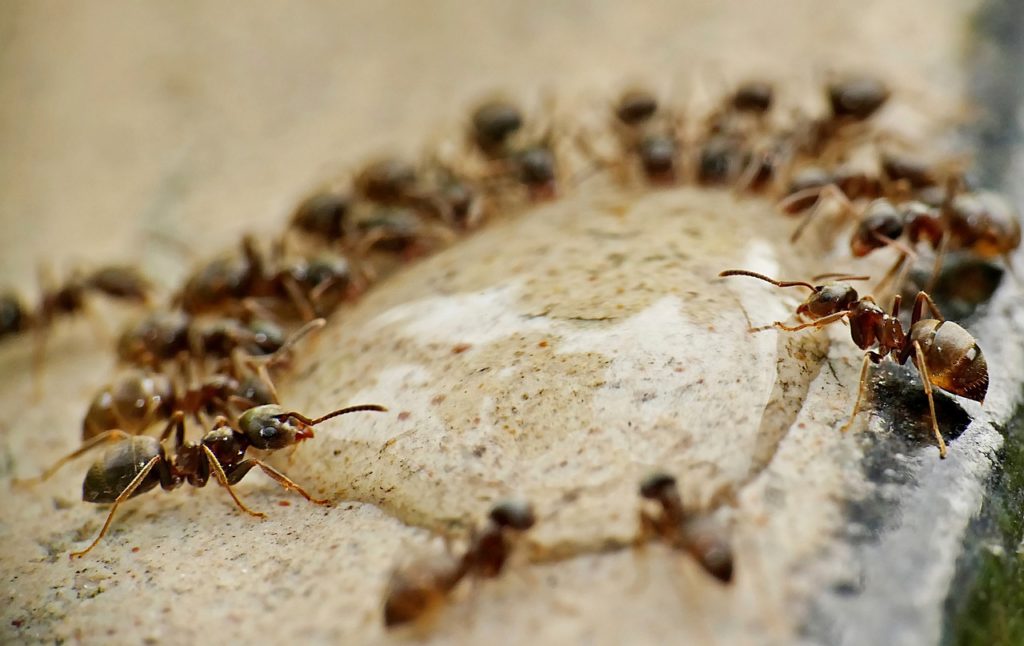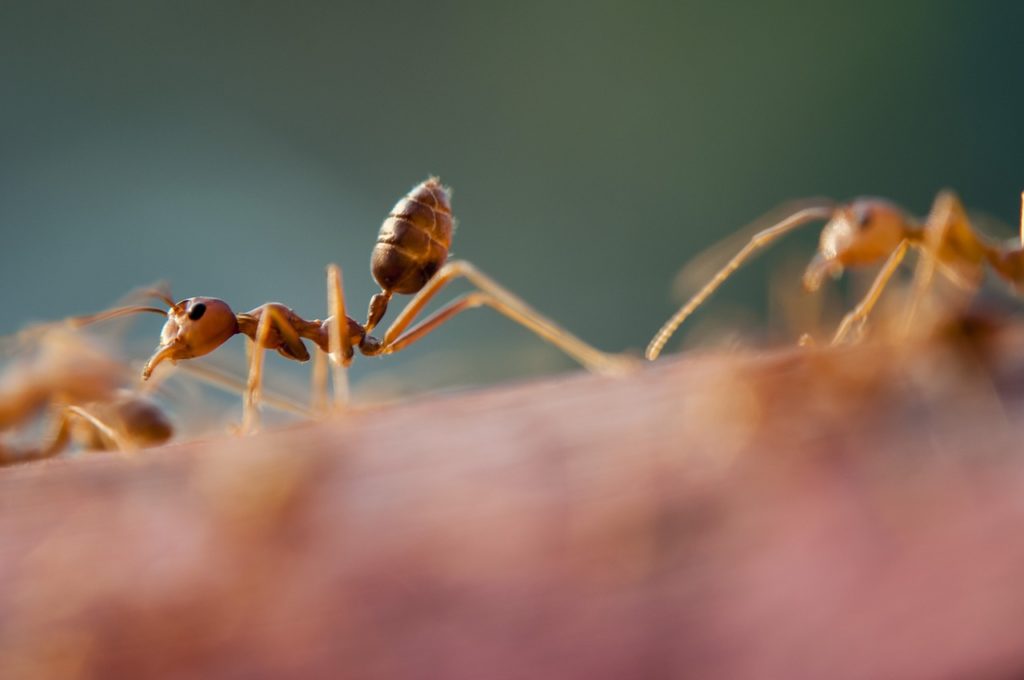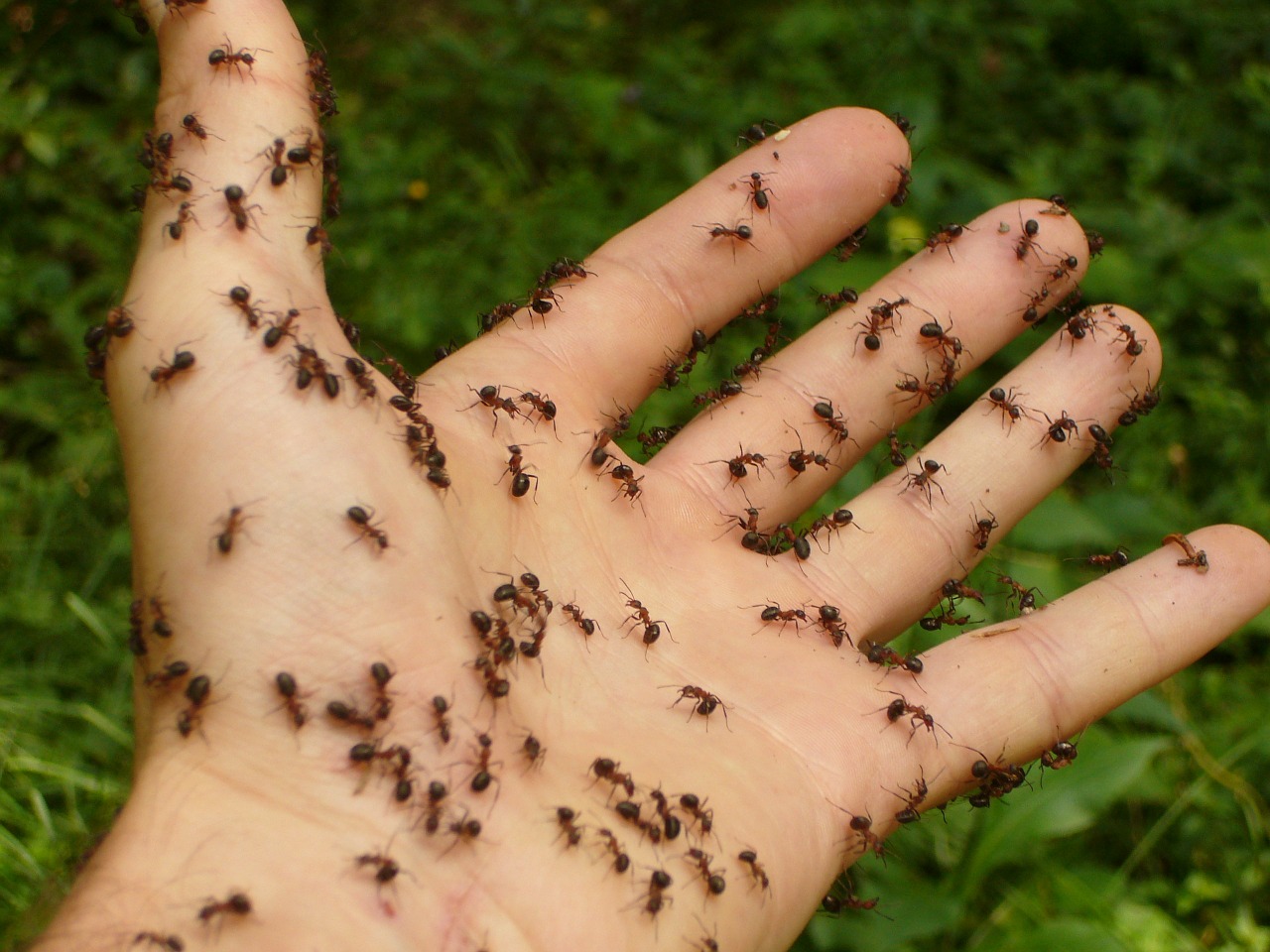When you read about solutions to ant problems online, you will notice that ant baits always come up. What are ant baits exactly and how do they get rid of ants in your home?
Ant baits are a mix of food and poison. The food is there to attract the ants while the poison is there to kill them. They are some of the most effective ant control methods out there because they can kill the ant queen and ultimately destroy the colony bothering your home.
How ant baits work
Ant baits work by deceiving worker ants to take them back to the colony and eventually kill the queen.
Remember that worker ants go in and around your home looking for food and water. They are generally the ones causing disturbances in your home, while other types of ants, such as their queen, stay in the colony.
Place the ant baits near ant trails or areas with high ant activity. The worker ants will gather the baits and bring them back to the colony, eventually killing everybody there who consumes the baits. This can be a slow process, because the toxic substances in the baits are slow-acting.
They are slow-acting to give time for worker ants to gather the baits, transport them back to their colony, and get eaten. If the toxic substances are fast-acting, the worker ants will not have an opportunity to spread the demise in their colony and just die on the spot.
Ant baits are very effective in getting rid of ant problems at home, because of the fact that they can kill the queen of the ant colony. You can’t really say the same for other ant control methods, such as repellents and sprays.

Pros and cons of using ant baits
Before using ant baits for your ant problem, it’s important to understand them first inside out. Here are the pros and cons of using this ant control method.
Pros:
- They can kill the ant queen. The ant queen is the source of ants in the colony. As long as it’s alive, it doesn’t matter how many worker ants you kill in your home. The queen will just replenish their ranks. Ant baits kill the main source of your pest problem.
- They are a more permanent solution to your ant problem. The problem with repellents is that they don’t actually kill ants effectively. They are used more for driving away ants. And the problem with sprays is that they only kill the worker ants around your home. They don’t kill the source.
- You can make DIY ant baits. You can create them by yourself using ingredients you can find in the pharmacy and supermarket. This makes this ant control method quite accessible.
Cons:
- They may be risky for households with children and pets. Remember that the baits have potentially toxic ingredients. This can put children and pets at risk. You will need to make sure that the baits are away from those who can put them in their mouths unsuspectingly.
- They may take a long time to take effect. The toxic substances in the baits are slow-acting. This gives the opportunity for worker ants to actually take the baits back to their colony. As a consequence, the baits may take a few days before you can see their effect.
- Different ant species require different baits. Ant baits are not always effective. There is actually a possibility for them to not produce results at all. This is because different ant species are attracted to different foods. If your baits happen to contain food that don’t really attract the kind of ant in your home, the baits may end up not doing anything.

Tips on using ant baits
Here are some tips to make sure you are using ant baits effectively.
- Read the label. If you are using ant baits you have purchased and not ones you have made on your own, read the instructions for proper use.
- Use fresh bait only. Once you open their packaging, you will need to use the baits within a year. This is because the baits become stale and no longer attractive to ants.
- Remove other food sources. Take note that the baits are food. They are not just poison. Attract worker ants faster by removing all other food sources in the area.
- Don’t use other ant control methods in the area. Don’t use repellents or sprays in the area where you have put your baits. You want the worker ants to be able to take the baits easily.
- Don’t put the baits on wet surfaces. Baits become less attractive to worker ants if they are basically ruined by water already. Keep your baits dry.
- Don’t disturb the ants while they collect the baits. You may have a strong urge to kill the worker ants as they gather in a tiny area to collect the baits. Resist the urge and let them take the baits back to their colony.
- Apply the bait again. You don’t just use ant baits once and expect your ant problem to be solved immediately. Even after the worker ants have collected the baits you have placed, place baits again and again, until worker ants stop coming.
DIY ant baits
You can buy ant baits at the store or make them on your own. DIY ones are just as effective, and you can make them using ingredients that are easily accessible.
One of the most popular DIY ant baits only has two simple ingredients – borax and powdered sugar. The powdered sugar acts as the food that attracts the worker ants and the borax acts as the toxic substance that will eventually kill all the ants in the colony.
Simply combine borax and powdered sugar in a 1:3 ratio. Sprinkle the product near ant trails or in areas with high ant activity. And make sure that these places are not accessible to children and pets.
Summary
Ant baits are a combination of food and poison. They are taken by worker ants back into the colony and kill everybody there. This makes ant baits one of the most effective ant control methods.
But they are not perfect. They can be risky to households with children and pets and may take a while to take effect because of the slow-acting toxic substances in the baits.

